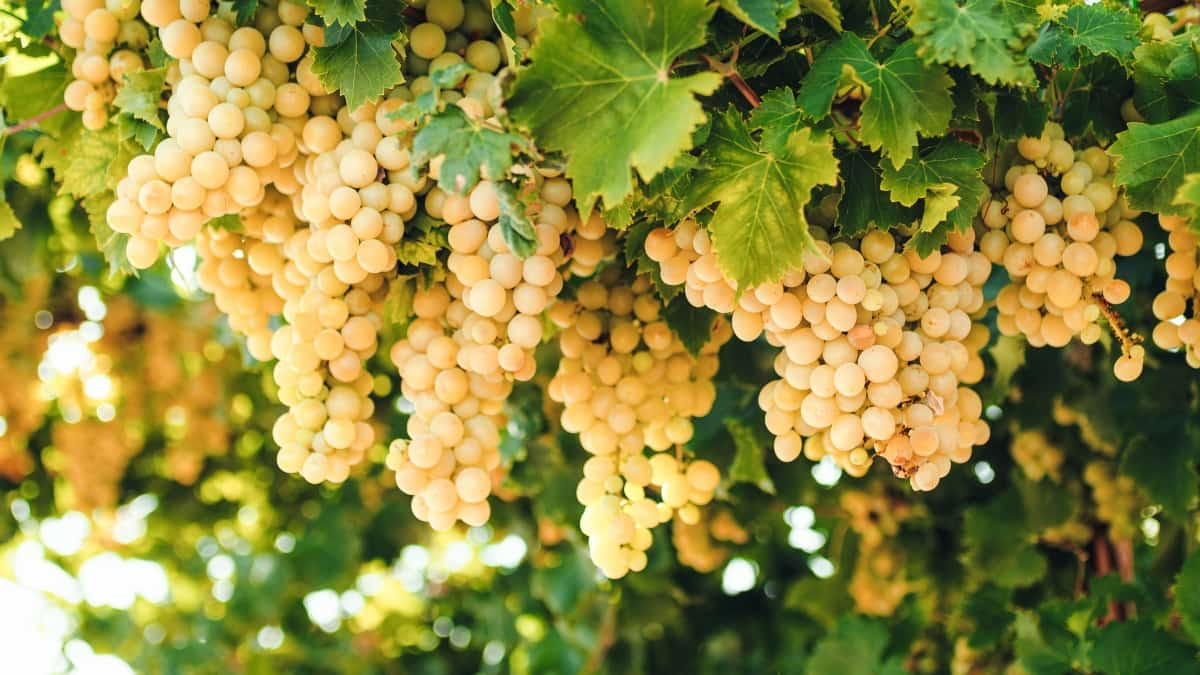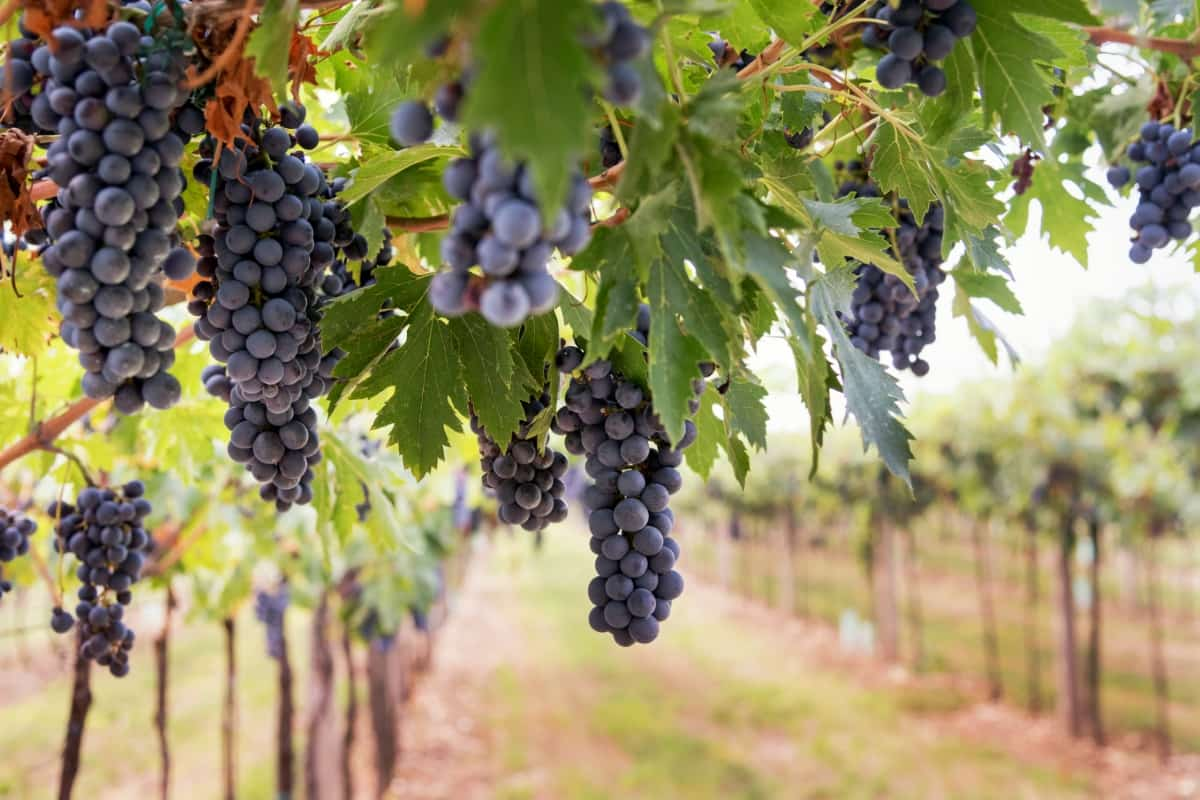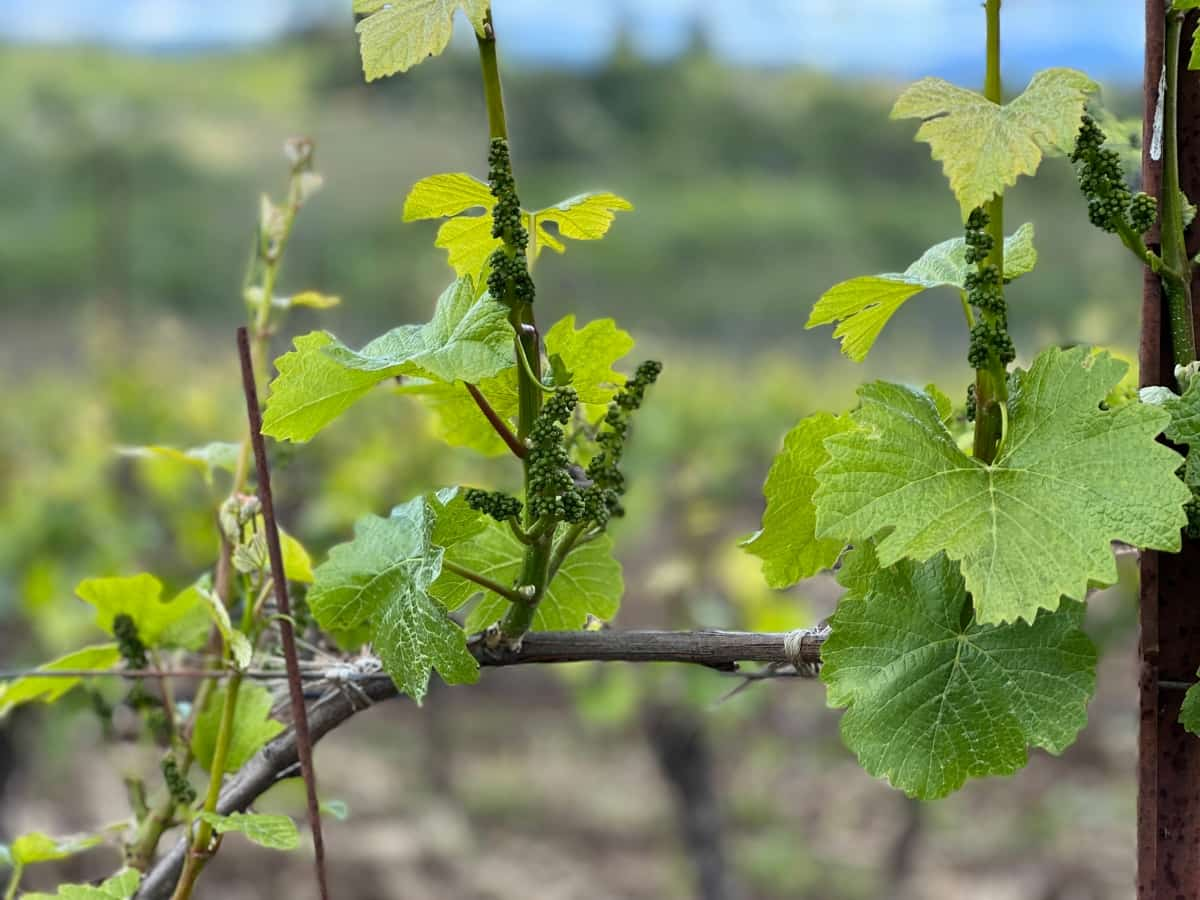Grape vines can become sick and eventually die. Although grape vines are hardy and resilient, various factors can lead to their demise. The most common cause of dying grape vines is a lack of proper care and attention. Knowing the causes of dying grape vines and how to fix them can keep your vines healthy and productive.

9 Causes of Dying Grape Vines
Why Are My Grape Vines Dying in Summer Heat, and How Can I Save It?
- When temperatures rise, grape vines can suffer from the heat and eventually die. Take steps to protect your grape vines to survive the summer months.
- To keep your grape vines from becoming dehydrated, provide them with enough water. Consider using an irrigation system to keep the soil moist and help your grape vines survive the summer.
- You may want to consider pruning your grape vines. Pruning can reduce the amount of foliage on your vines, which will help them reduce water loss and keep them from getting too hot.
Preventing Grape Vines Death from Fungal Infections: Effective Remedies and Prevention Tips
Various fungi, including Botrytis, Phomopsis, and Eutypa, cause fungal infections. These fungi can cause leaf spots, fruit rot, and other plant diseases. Botrytis, in particular, is a common cause of grape vine death. The best preventative measures include avoiding over-watering, ensuring good soil drainage, and using mulch to moisten the soil. Additionally, fungicides may be used as a preventative measure but should be used sparingly and only when absolutely necessary.
Several remedies can be used when treating grapevines that have been infected with fungi. These include treating the vines with fungicidal sprays, using copper fungicides, and applying organic compost tea. Copper fungicides are often used to treat Botrytis, while compost tea treats Phomopsis and Eutypa.
Identifying Nutrient Deficiencies in Grape Vines and Remedies to Revive Them
Most plants require fertilization to grow. While grapes can survive without fertilizer, failing to feed them when needed can result in their death or slowed growth. In most soils, fertilizer provides essential nutrients that are not already present. The soil in the vineyard absorbs nutrients as plants grow, resulting in a constant need to fertilize grape vines. You can tell if your grape vines need more fertilizer by looking for these signs:
- Decreased vine growth
- Yellowed Leaves
- Burned leaves during summer months
To make sure your plants are well-fed during the growing process, here are some feeding guidelines you can follow:
- Nutrient-rich soil is essential during the planting season and in the early spring.
- As the vines grow consistently, your feeding schedule will increase to every three weeks during spring.
- Feeding can be increased weekly once buds have formed on the vine.
- When grapes grow, fertilization should cease so the fruit can ripen and become sweet.
- Fertilization is rarely needed during the dormant winter season.
How to Protect Grape Viness from Pests and Diseases to Prevent Decline and Death
Protecting grape vines from pests and diseases is vital to the vine’s health and vitality. Without proper maintenance and monitoring, the vines can quickly decline and die. To protect your grape vines, you should take the following steps:
- Keep the soil around your grape vines in good condition. This includes fertilizing the soil and ensuring it is well-drained and debris-free.
- Monitor the vines regularly for signs of pests or disease. Look for any signs of wilting, discoloration, or insect infestations.
- Apply fungicides and insecticides as needed, but follow the directions carefully.
In case you missed it: 9 Causes of Dying Custard Apple Tree and How to Fix It?

Overwatering Issues in Grape Vines: Signs, Symptoms, and Steps to Rescue a Dying Tree
Several things can happen when you overwater grape vines, all of which will result in the death of your vine. The following are some signs that your plants are overwatered.
- Yellowing leaves
- Soil that always seems soaked
- Wilting
- Leaves that have brown tips
- Root rot
- The plant is losing its newer leaves
If you want to keep your grape vine from drowning, you must stop watering it. Providing oxygen to the roots will allow the soil to dry out. The roots of your grape vine can be gently removed from the soil for a few hours if it’s in a pot and hasn’t grown too large. For support, leave the vines attached to the trellis. If you keep mulch on top of your soil, remove it to allow it to dry. So the soil will not hold too much moisture, do not add mulch when you begin to water again.
Underwatering Issues in Grape Vines: Signs, Symptoms, and Steps to Rescue a Dying Tree
The vines can die if underwatered, just as they can die if overwatered. The signs to determine if you have underwatered your grape vines include wilting leaves, dry soil, plant growth slowing down or stopping, yellowed leaves, and leaves curling and looking dry. Make sure your grape vines receive enough water by creating a watering schedule. A grape plant should be watered every two to three days. Within that time frame, increase the watering frequency if the soil is drying out. Moisture should remain in the soil, but it should not be soggy.
Grape Vines Winter Damage/dying: Protecting Trees from Frost and Cold Temperatures
Grape vines contain living cells that can suffer damage and freeze during winter months if not handled properly. The living cells within a plant are interconnected into tissues; several tissues make up an organism. When certain cells freeze and die, more isolated parts of the plant will die. However, the entire plant may die if cells are dying and freezing all over the vine. How to prevent grape vines from freezing or dying during the winter:
- Wrapping the vine with blankets or piling up soil around the stems can protect them from cold temperatures.
- Make sure grass grows around your vines so heat can be trapped.
- Winter is when you should avoid disturbing the soil around your grape vines.
- Reduce the amount of pruning. For extra protection from cold, leave extra buds on the grape vines.
- During the night, run a sprinkler to water the grape vines. Heat will be released from the water as it thaws in the morning after freezing overnight.
Improper Pruning May Cause Grape Vines Death: Pruning Methods for Healthy Growth
Pruning grapevines is essential for healthy growth and a successful harvest. Improper pruning, however, can lead to the death of the vine. To achieve healthy growth and a bountiful harvest, it is important to understand the proper pruning methods and avoid those detrimental to the vine. Pruning too severely can lead to decreased yields and even death of the vine. Don’t prune more than one-quarter of the vine’s total foliage.
The first step when pruning grapevines is to assess the type of vine and its particular needs. For example, a low-vigor vine will require more frequent pruning than a high-vigor vine. Also, the type of grape vine will determine the best pruning method for it. For example, cane pruning is best for European-type vines, while spur pruning is best for American-type vines.
Reviving a Stressed Grape Vines: Rehabilitation Methods for Overall Recovery
If a grape vine is stressed, it can affect the grapes’ quality. Fortunately, many steps can be taken to help revive a stressed grape vine and return it to optimal health. First, identify the issue causing the stress. Common causes of grape vine stress include lack of water, nutrient deficiencies, and diseases caused by pests or fungi. Once the cause of the stress is found, take steps to address the issue. This can include providing the vine with additional water or nutrients or treating it with pesticides or fungicides.
In case you missed it: 9 Causes of Dying Orange Tree and How to Fix It?

Reviving a stressed grape vine needs adequate protection. Grape vines need to be protected from extreme temperatures, excessive sunlight, and strong winds. Shade cloth or a trellis can protect from the harsh sunlight and wind, and mulch to keep the soil temperature consistent.
Conclusion
By taking the proper care steps for your grape vines and protecting them from environmental and pest damage, you can help ensure they remain healthy and productive. With the right care, your grape vines can provide a bountiful grape harvest for many years.
- Feed Your Flock for Less: Top 10 Tips to Save on Chicken Feed
- Ultimate Guide to Ossabaw Island Hog: Breeding, Raising, Diet, and Care
- Hatching Answers: The Top 10 Reasons Your Chickens Aren’t Laying Eggs
- Eggs and Economics: Breaking Down the Cost of Raising Backyard Chickens
- Defend Your Greens: Proven Methods to Keep Iguanas Out of Your Garden
- Ultimate Guide to Cinnamon Queen Chicken: A Comprehensive Guide for Beginners
- Ultimate Guide to California Tan Chicken: Breeding, Raising, Diet, Egg-Production and Care
- Ultimate Guide to Marsh Daisy Chicken: Breeding, Raising, Diet, and Care
- 10 Types of Chicken Farming Businesses You Can Start for Profits